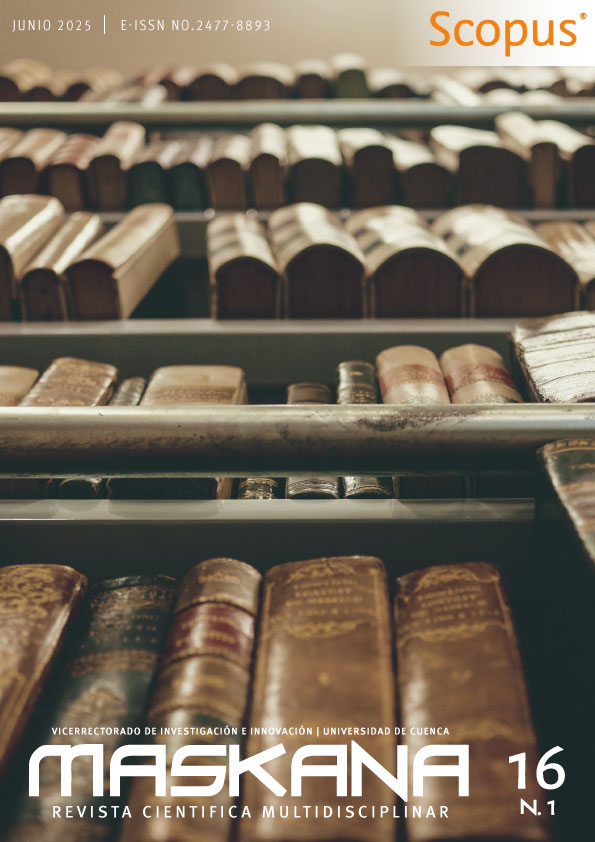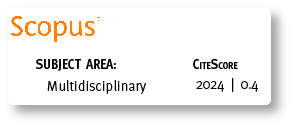Flipped learning and lifelong learning: synergies for 21st century education
DOI:
https://doi.org/10.18537/mskn.16.01.17Keywords:
flipped learning, perceptions, Flipped Learning; Perceptions; Lifelong learning; Higher Education., higher education, Ecuadorian studentsAbstract
This study explored the perceptions of Ecuadorian university students regarding the Flipped Learning (FL) model in a Research Methodology course, employing a mixed-methods approach (questionnaire, N = 18; focus group, N = 7). The findings revealed a generally positive evaluation of FL, with particular emphasis on the flexibility and usefulness of videos to reinforce learning. However, challenges were also identified, including limited student engagement and difficulties in formulating questions while watching the videos. Video duration and quality emerged as critical factors influencing the learning experience. The study concludes that FL can be effective in this context, provided it is carefully planned with attention to content selection and strategies that promote interaction. Future research should examine the long-term impact of FL, considering variables such as gender and digital competence, and recognizing the convergence of FL with lifelong learning as a comprehensive educational paradigm.
Downloads
Metrics
References
Abeysekera, L., & Dawson, P. (2015). Motivation and cognitive load in the flipped classroom: definition, rationale and a call for research. Higher Education Research and Development, 34(1), 1–14. https://doi.org/10.1080/07294360.2014.934336
Akçayır, G., & Akçayır, M. (2018). The flipped classroom: A review of its advantages and challenges. Computers and Education, 126(July), 334–345. https://doi.org/10.1016/j.compedu.2018.07.021
Alyoussef, I. Y. (2023). Acceptance of a flipped classroom to improve university students’ learning: An empirical study on the TAM model and the unified theory of acceptance and use of technology (UTAUT). Heliyon, 8(12), e12529. https://doi.org/10.1016/j.heliyon.2022.e12529
Awidi, I. T., & Paynter, M. (2019). The impact of a flipped classroom approach on student learning experience. Computers and Education, 128, 269–283. https://doi.org/10.1016/j.compedu.2018.09.013
Blau, I., & Shamir-Inbal, T. (2017). Re-designed flipped learning model in an academic course: The role of co-creation and co-regulation. Computers and Education, 115, 69–81. https://doi.org/10.1016/j.compedu.2017.07.014
Bordes, S. J., Walker, D., Modica, L. J., Buckland, J., & Sobering, A. K. (2021). Towards the optimal use of video recordings to support the flipped classroom in medical school basic sciences education. Medical Education Online, 26(1). https://doi.org/10.1080/10872981.2020.1841406
Campos-Martínez, H., & Duran-Llaro, K. L. (2023). Flipped classroom: Modelo pedagógico para desarrollar la competencia del aprendizaje autorregulado. Revista Arbitrada Interdisciplinaria Koinonía, 8(2), 331–349. https://doi.org/10.35381/r.k.v8i2.2879
Choi, H., Kim, J., Bang, K. S., Park, Y. H., Lee, N. J., & Kim, C. (2015). Applying the Flipped learning Model to an English- Medium Nursing Course. Journal of Korean Academy of Nursing, 45(6), 939–948. https://doi.org/10.4040/jkan.2015.45.6.939
Creswell, J. W. (2009). Research design: Qualitative, quantitative, and mixed methods approaches. SAGE Publications, Inc.
Díaz Arévalo, B. M., Ricce Salazar, C. R., & López Regalado, Ó. (2021). Plataforma Moodle para la formación docente en servicio. Aloma: Revista de Psicologia, Ciències de l’Educació i de l’Esport, 39(2), 75–83. https://doi.org/10.51698/aloma.2021.39.2.75-83
Escobar, J., & Bonilla Jimenez, I. (2009). Grupos Focales: Una Guía Conceptual y Metodológica. Cuadernos Hispanoamericanos de Psicología, 9(1), 51–67. http://biblioteca.udgvirtual.udg.mx/jspui/handle/123456789/957
Flipped Learning Network. (2014). The four pillars of FLIP. https://flippedlearning.org/definition-of-flipped-learning/
Gnaur, D., & Hüttel, H. (2014). How a flipped learning environment affects learning in a course on theoretical computer science. In E. Popescu, R. W. H. Lau, K. Pata, H. Leung, & M. Laanpere (Eds.), Advances in Web-Based Learning – ICWL 2014. ICWL 2014. Lecture Notes in Computer Science, vol 8613. (pp. 219–228). Springer. https://doi.org/10.1007/978-3-319-09635-3_25
Han, H., Mørk, F., Rune, R., & Krumsvik, J. (2023). Student teachers’ perceptions of flipped classroom in EFL. Education and Information Technologies, 0123456789. https://doi.org/10.1007/s10639-023-11839-w
Hew, K. F., & Lo, C. K. (2018). Flipped classroom improves student learning in health professions education: A meta-analysis. BMC Medical Education, 18(1), 1–12. https://doi.org/10.1186/s12909-018-1144-z
Hung, H.-T. (2015). Flipping the classroom for English language learners to foster active learning. Computer Assisted Language Learning, 28(1), 81–96. https://doi.org/10.1080/09588221.2014.967701
Kim, J. (2017). A study of students’ perspectives on a flipped learning model and associations among personality, learning styles and satisfaction. Innovations in Education and Teaching International, 1–11. https://doi.org/10.1080/14703297.2017.1286998
Lee, J. (2023). Flipped Learning. In O. Zawacki-Richter & I. Jung (Eds.), Handbook of Open, Distance and Digital Education (pp. 1179–1196). Springer. https://doi.org/10.1007/978-981-19-2080-6_69
Lee, J., & Choi, H. (2019). Rethinking the flipped learning pre-class: Its influence on the success of flipped learning and related factors. British Journal of Educational Technology, 50(2), 934–945. https://doi.org/10.1111/bjet.12618
Lee, J., Lim, C., & Kim, H. (2017). Development of an instructional design model for flipped learning in higher education. Educational Technology Research and Development, 65, 427–453. https://doi.org/10.1007/s11423-016-9502-1
Li, R., Lund, A., & Nordsteien, A. (2021). The link between flipped and active learning: a scoping review. Teaching in Higher Education, 1–35. https://doi.org/10.1080/13562517.2021.1943655
Malo Álvarez, Salvador., Maldonado-Maldonado, Alma., Gacel Ávila, Jocelyne., & Marmolejo, Francisco. (2020). Impacto del Covid-19 en la Educación Superior de México. Educación Superior En América Latina, 9–14. https://www.ses.unam.mx/curso2020/materiales/Sesion3/Marmolejo2020_ImpactoDelCovid19EnLaESDeMexico.pdf
Martínez-Clares, P., Pérez-Cusó, J., González-Morga, N., & González-Lorente, C. (2024). Transversal skills and flipped classroom in higher education. Revista Electrónica Interuniversitaria de Formación del Profesorado, 28(1), 169–182. https://doi.org/10.6018/reifop.622951
O’Connor, E. E., Fried, J., McNulty, N., Shah, P., Hogg, J. P., Lewis, P., Zeffiro, T., Agarwal, V., & Reddy, S. (2016). Flipping Radiology Education Right Side Up. Academic Radiology, 23(7), 810–822. https://doi.org/10.1016/j.acra.2016.02.011
Pence, P. L. (2016). “Flipping” a first-year medical-surgical associate degree registered nursing course: A 2-year pilot study. Teaching and Learning in Nursing, 11(2), 52–57. https://doi.org/10.1016/j.teln.2015.12.006
Pinos-Vélez, V., Quinde-Herrera, K., Abril-Ulloa, V., Moscoso, B., Carrión, G., & Urgilés, J. (2020). Designing the Pre-Class and Class to Implement the Flipped Learning Model in a Research Methodology Course. Revista Iberoamericana de Tecnologías Del Aprendizaje, 15(1), 1–8. https://doi.org/10.1109/RITA.2020.2978422
Piñuel Raigada, J. L. (2002). Epistemología, metodología y técnicas del análisis de contenido. Sociolinguistic Studies, 3(1), 1–42. https://doi.org/10.1558/sols.v3i1.1
Quinde-Herrera, K., Esteve-González, V., & Valls-Bautista, C. (2022). Pautas para el diseño instruccional bajo del modelo flipped learning en educación superior: Análisis desde el modelo ADDIE. In C. Grimalt-Álvaro, L. Marqués-Molías, R. Palau, J. Holgado, C. Valls-Bautista, & C. Hernández-Escolano (Eds.), Tecnología educativa para los retos de la era digital (pp. 93–105). https://octaedro.com/wp-content/uploads/2022/10/9788419023889.pdf
Quinde-Herrera, K., Pinos-Vélez, V., Esteve-González, V., & Valls-Bautista, C. (2023a). Aprendizaje invertido en Educación Superior: Una revisión de alcance de la implementación| Flipped Learning in Higher Education: A Scoping Review of Implementation. Edutec, 84, 18–34. https://doi.org/10.21556/edutec.2023.84.2785
Quinde-Herrera, K., Esteve-González, V. ., & Valls-Bautista, C. . (2024). Diseño y validación de un prototipo instruccional para aplicar el modelo flipped learning en educación superior. UTE Teaching & Technology (Universitas Tarraconensis), 1, 30-48. https://doi.org/10.17345/ute.2023.1.3507 (Original work published 2023)
Sánchez-Soto, L., & García-Martín, J. (2022). El impacto psicoeducativo de la metodología Flipped Classroom en la Educación Superior: una revisión teórica sistemática. Revista Complutense de Educación, 34(1), 217–229. https://doi.org/10.5209/rced.77299
Sola Martínez, T. S., Aznar Díaz, I. A., Romero Rodríguez, J. M., & Rodríguez-García, A.-M. (2019). Eficacia del método flipped classroom en la Universidad: Meta-análisis de la producción científica de impacto. REICE. Revista Iberoamericana Sobre Calidad, Eficacia y Cambio En Educación, 17(1), 25–38. https://doi.org/10.15366/reice2019.17.1.002
Sun, Z., Xie, K., & Anderman, L. H. (2018). The role of self-regulated learning in students’ success in flipped undergraduate math courses. The Internet and Higher Education, 36, 41–53. https://doi.org/10.1016/j.iheduc.2017.09.003
Urgilés, J., Carrión, G., Pinos-Vélez, V., Abril-Ulloa, V., & Quinde, K. (2019). Experiences in the application of the Flipped Learning model in a Music Technology course. Maskana, 10(2), 15–20. https://doi.org/10.18537/mskn.10.02.02
Xiu, Y., Moore, M. E., Thompson, P., & French, D. P. (2019). Student perceptions of lecture-capture video to facilitate learning in a Flipped Classroom. TechTrends, 63(4), 369–375. https://doi.org/10.1007/s11528-018-0293-6
Downloads
Published
How to Cite
Issue
Section
License
Copyright (c) 2025 Karina Sandra Quinde Herrera, Cristina Valls-Bautista, Vanessa Esteve-González

This work is licensed under a Creative Commons Attribution-NonCommercial-ShareAlike 4.0 International License.
Copyright © Autors. Creative Commons Attribution 4.0 License. for any article submitted from 6 June 2017 onwards. For manuscripts submitted before, the CC BY 3.0 License was used.
![]()
You are free to:
 |
Share — copy and redistribute the material in any medium or format |
 |
Adapt — remix, transform, and build upon the material for any purpose, even commercially. |
Under the following conditions:
 |
Attribution — You must give appropriate credit, provide a link to the licence, and indicate if changes were made. You may do so in any reasonable manner, but not in any way that suggests the licenser endorses you or your use. |
| No additional restrictions — You may not apply legal terms or technological measures that legally restrict others from doing anything the licence permits. |









